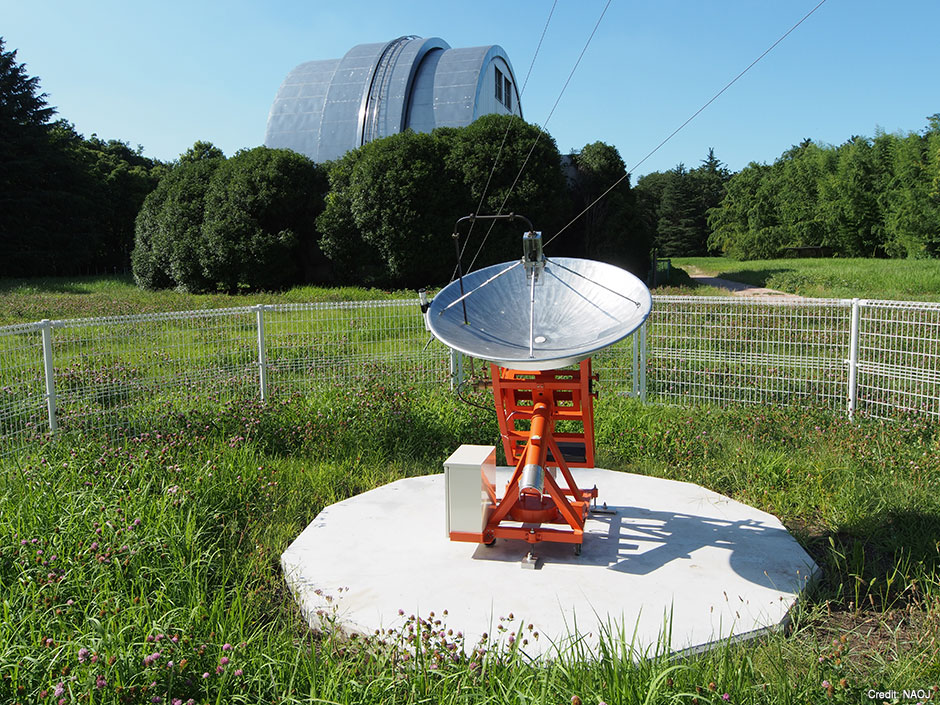A Radio Telescope that Tracked Solar Activity, Retired to Mitaka
Photo・

Raining down from the Sun are not just the bright sunshine and warmth of visible and infrared radiation. When solar activity breaks out, intense explosive phenomena known as “solar flares” occur. It is thought that magnetic fields have an important role in the occurrence of a solar flare. Radio telescopes play an active part in clarifying that mechanism. This radio telescope was previously deployed at Nobeyama Radio Observatory, observing radio waves emitted from high energy electrons heated by solar flares. Now its mission has finished and it is displayed quietly in Mitaka Campus.
The Progression of Solar Radio Observations
Observations of the Sun through radio waves started shortly after the end of World War II. The solar radio observation antenna built at Mitaka in 1949 by Tokyo Astronomical Observatory (the predecessor of NAOJ) attached to the University of Tokyo has now been restored in Nobeyama.
The base of solar radio observations moved from Mitaka to Nobeyama Solar Radio Observatory, established in 1969. In 1971, radio interferometers for solar observations were constructed. There was an array of 17 large 6-meter and 8-meter diameter parabolic antennas for observing 160 MHz frequency radio waves and an array of 12 parabolic antennas with 1.2 meter diameters for observing 17 GHz. One of the 1.2 meter antennas which had been used until 1992 was transferred to Mitaka Campus and preserved. Now it isn’t used for observations, but it can still receive the radio waves coming from the Sun.
Text by: Seiichiro Naito (Public Relations Center, NAOJ)
Translation by: Ramsey Lundock (NAOJ)
Image Data
| Date | July 31, 2012 |
|---|---|
| Photographer | Shogo Nagayama |
| Credit | National Astronomical Observatory of Japan |
Download
- Medium resolution (940 x 705, 269KB)
- High resolution (2000 x 1500, 3.03MB)
- Maximum resolution (4608 x 3456, 7.32MB)